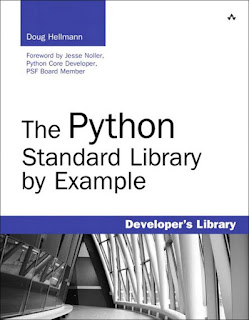The Python Standard Library by Example: Developer’s Library
Download
Introduction
Distributed with every copy of Python, the standard library contains hundreds of
modules that provide tools for interacting with the operating system, interpreter, and
Internet. All of them are tested and ready to be used to jump start the development of
your applications. This book presents selected examples demonstrating how to use the
most commonly used features of the modules that give Python its “batteries included”
slogan, taken from the popular Python Module of the Week (PyMOTW) blog series.
This Book’s Target Audience
The audience for this book is an intermediate Python programmer, so although all the
source code is presented with discussion, only a few cases include line-by-line explanations.
Every section focuses on the features of the modules, illustrated by the source
code and output from fully independent example programs. Each feature is presented as
concisely as possible, so the reader can focus on the module or function being demonstrated
without being distracted by the supporting code.
An experienced programmer familiar with other languages may be able to learn
Python from this book, but it is not intended to be an introduction to the language. Some
prior experience writing Python programs will be useful when studying the examples.
Several sections, such as the description of network programming with sockets or
hmac encryption, require domain-specific knowledge. The basic information needed to
explain the examples is included here, but the range of topics covered by the modules
in the standard library makes it impossible to cover every topic comprehensively in
a single volume. The discussion of each module is followed by a list of suggested
sources for more information and further reading. These include online resources, RFC
standards documents, and related books.
Although the current transition to Python 3 is well underway, Python 2 is still
likely to be the primary version of Python used in production environments for years to come because of the large amount of legacy Python 2 source code available and
the slow transition rate to Python 3. All the source code for the examples has been
updated from the original online versions and tested with Python 2.7, the final release
of the 2.x series. Many of the example programs can be readily adapted to work with
Python 3, but others cover modules that have been renamed or deprecated.
How This Book Is Organized
The modules are grouped into chapters to make it easy to find an individual module for
reference and browse by subject for more leisurely exploration. The book supplements
the comprehensive reference guide available on http://docs.python.org, providing fully
functional example programs to demonstrate the features described there.
Home Web Development The Python Standard Library by Example

